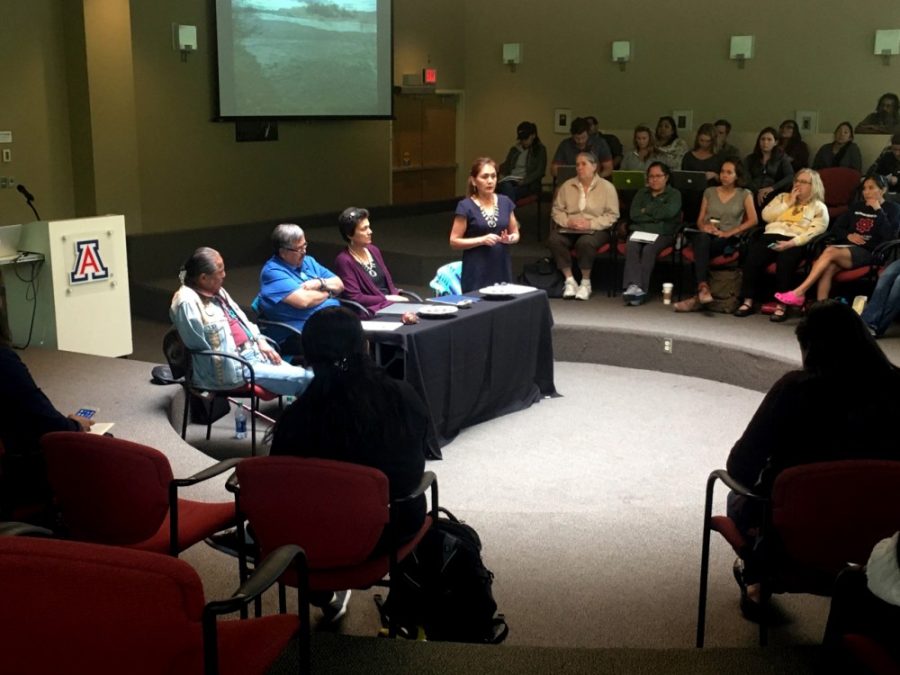The United States Environmental Protection Agency was performing an investigation of the Gold King Mine, a mine that was no longer in use and that neighbors Cement Creek, on Aug. 5, 2015.
During the years of abandonment, acid mine drainage had accumulated behind a natural soil plug, which worked to keep the acidic toxins and chemicals contained. This accumulation of acidic mine drainage is the result of water refilling old mining tunnels and mixing with ore that becomes acidic when in contact with air and water.
Typically, the drainage includes toxic chemicals such as lead, arsenic, mercury and iron, which turns yellow when watered down.
During the investigation, probing by bulky machinery disturbed the soil and the plug was displaced, releasing the “yellow beast.” It was estimated that 3 million gallons of acidic drainage from the mine gushed out into the creek, flowed into the Animas River and reached the San Juan and Colorado Rivers.
This network of rivers and creeks belong to the Colorado River Basin, which spans through many states, including Colorado, Utah, Nevada, New Mexico, Arizona and California, and is home to 12 different American Indian tribes. The spill had a special significance to the Navajo people.
“We identify ourselves with the basic elements of the Earth,” said Duane “Chili” Yazzie, president of the Shiprock Chapter of the Navajo Nation in Shiprock, New Mexico.
To the Navajo people, the Gold King Mine spill represented a yellow beast, toxic and treacherous. Without water, one is an incomplete being, unable to function properly on this Earth. This is the stark the reality and sentiment of many Navajo people affected by the Gold King Mine spill in the fall of 2015. When the mine spill occurred, the spirit and livelihood of many clans in the Navajo Nation, as well as other tribes, were destroyed.
Nearly eight months later, the river basin and its environment, as well as the communities surrounding the basin, are still feeling the traumatic events of the spill. Karletta Chief, a specialist in hydrology and tribal extension in the UA’s Department of Soil, Water and Environmental Science, has been putting forth efforts with her team to research the spill.
Recently, the National Institute of Environmental Health Sciences granted Chief and her colleague, Paloma Beamer, $434,000 to fund their work with the Navajo Nation on the exposure and risk issues associated with the spill.
Chief and her colleagues set up a panel regarding the spill, titled “Navajo Perspectives on the Gold King Mine Spill,” on Tuesday at the UA. The panel served as a platform for the voices of the affected Navajo people to be heard.
The panel included members and educators of the Navajo Nation: Perry Charley, research and outreach director of Diné Environmental Institute of Diné College in Shiprock, New Mexico, Jani Ingram, associate professor of analytical and environmental chemistry at Northern Arizona University, and Mae-Gilene Begay, program director of the Navajo Community Health Representative and Outreach Program.
“The risk assessors [of the spill] failed to recognize the Navajo perspective,” Charley said during the panel.
This panel aimed to ensure the concerns and ideas of the Navajo people were being heard. Unlike some other communities that populate the affected areas, the water from the rivers played a role that was much more than economic.
Beyond the fact the Navajo people thrive on an agricultural livelihood and their irrigation systems were now contaminated, their spiritual connections with the water lent to the greatest hardship of the spill, which was not accounted for by officials.
“When one of the four elements are disturbed, we are not walking in harmony with the earth,” Charley said.
Thus researchers such as Chief and Beamer, as well as the members of the panel, have taken initiative in reclaiming the river from the toxic grasp of the mine spill, keeping the urgent Navajo sentiment in mind. While research is still being conducted on the spill and its effects, the united front put up by the Navajo community is making headway on the issue.
Follow Lena Naser on Twitter.









